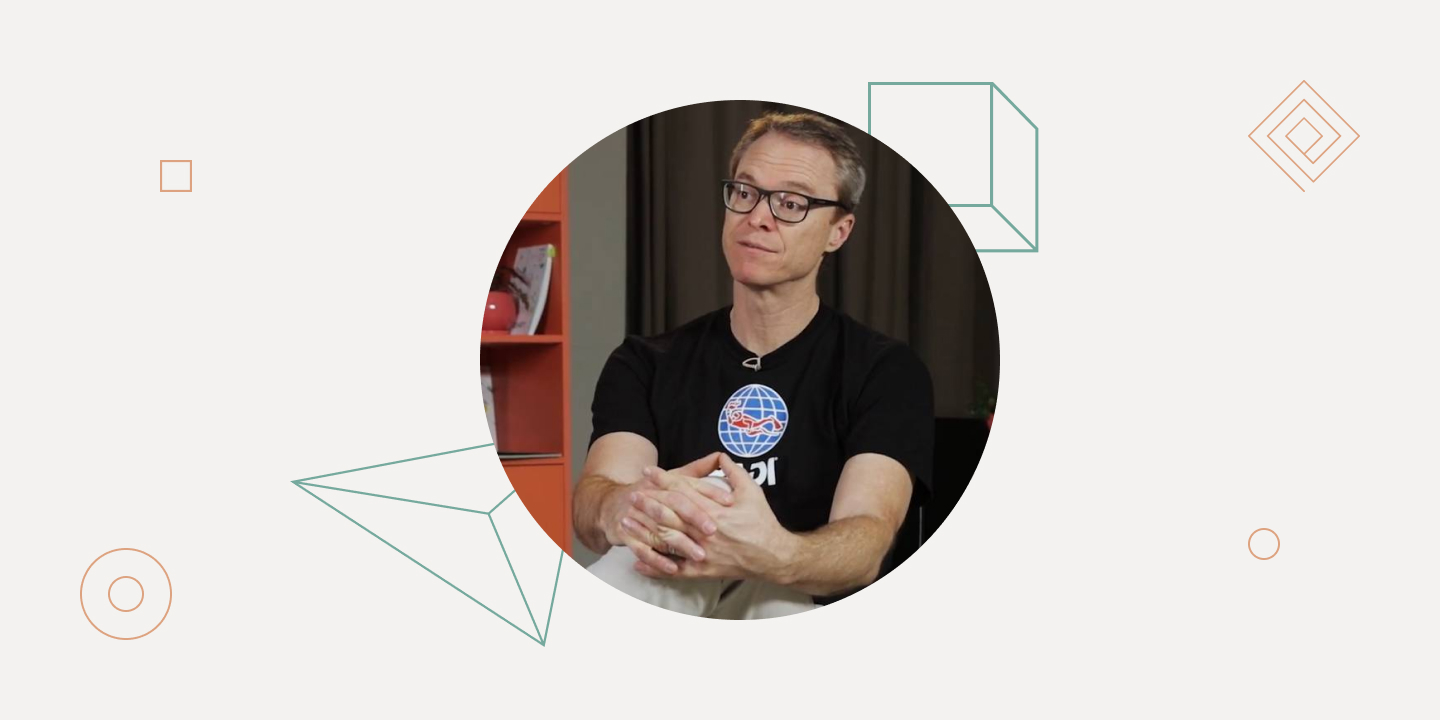How to Build a Travel Booking Website [PADI Travel Experience]
![How to Build a Travel Booking Website [PADI Travel Experience]](https://djangostars.com/blog/wp-content/uploads/2021/12/How-to-develop-a-travel-booking-service_-5-lessons-from-the-PADI-development.jpg)
Easy to use, smooth transactions, quick access to information and deals – passionate travelers usually use these phrases to describe why they love their booking service. However, to build a travel booking system that is attractive and simple, you have to go through a long and intricate journey.
In this article, I’ll shed light on the main aspects of how to build a travel booking website. Our team learned about all of them while implementing ideas and the business goals of Diviac and then PADI teams.
In this article, we will not touch on the technical details of how to create a travel booking website or application (or rather a whole travel booking system). We will talk about the main points that you should realize when starting to implement the idea of developing travel booking system project.
Core Elements for Your Travel Booking System
It seems that the logic behind all online booking services is the same: customers come to the platform, choose dates, a room or destination, proceed with the payment and hopefully get a confirmation email with a teaser photo. There’s a number of off-the-shelf booking solutions with a tried-and-tested algorithm you can implement fast, but the flipside of the speed is limited functionality. When you start small and have a couple of options for booking, you may opt for an off-the-shelf solution. However, if you realize that your business will gain traction over time and your number of options and users will only go up, a set of popular functions may soon appear too restrictive for you.
Building a travel booking solution from scratch takes time and requires much more comprehensive budgets than running an out-of-the-box solution. But it’s way better from a long-term perspective because this approach helps to build mutually beneficial relations with an accurately selected target audience. It’s useful for small and mid-sized local travel solutions focused on specific audiences.
There is no one-size-fits-all approach to this type of service. Even though basic features are about the same, various booking systems may vary significantly
There’s no shame in having a sneak peek at top-rated apps such as Booking.com, Expedia, TripAdvisor Kayak or Airbnb and pulling out some ideas from the cool elements and features they all have.
When you start creating the SOW for your online booking service, think of the elements that will create a personalized experience and boost your conversions:
| Mobile optimisation | EMarketer predicts that 49.5% of US digital travel sales in 2021 will be made via mobile, so make sure your app will have a responsive design that shines on all types of devices. |
|---|---|
| Location identification | Localization helps create a better, more personalized experience for users (they will see local office addresses, contact numbers & currency) |
| Personalization | By analyzing visitors’ behavioral patterns through cookies and logs, the service will suggest tailored deals. |
| Reviews and ratings | Giving the customers an opportunity to leave a review will help increase customer engagement and trust. |
| Gamification | Adding interactive elements like quizzes, tests and calculators will also add to customer engagement. |
| Creating a sense of Urgency | Adding elements that emphasize the best deals and showing real-time dynamics helps users find the best propositions. |
| Inspirational Elements | Most visitors spent the lion’s share of their time staring at cool pictures and comparing, considering and weighing the different options. Make sure your service inspires people – quality content will guide them through their travel planning. |
To build an online travel bookings system like PADI or Airbnb (or even modernize your booking service), you have to go through the entire decision-making funnel of your customer first. Understanding problems and pains of your service users will make it stand out from other apps. Think of how users are already solving the problem and how your app will help them do it better, or faster or (your option).
The development of an online booking service will require a lot of work and technical skill – it will need to handle filtered searching, geolocation, online payments, communication between users, and review systems. So make sure you know what value your service will bring to the customers:
![How to Build a Travel Booking Website [PADI Travel Experience] 1](https://djangostars.com/blog/wp-content/uploads/2024/02/value-of-service.png)
A Business Model Canvas is a good option for systematizing your vision for your travel booking solution:
![How to Build a Travel Booking Website [PADI Travel Experience] 2](https://djangostars.com/blog/wp-content/uploads/2024/02/Business-Model-Canvas.png)
So, what is the value proposition of the PADI Travel booking service?
First Diviac, than PADI Travel, exists to help divers explore more of the underwater world, and inspire and grow the overall diving community for the benefit of everyone in the diving industry. It offers more dive destinations and more dive holidays than any other travel company in the world, and it will continue to expand in the coming months with increased dive resort offerings.
When your team starts the development of a travel app from scratch, it’s important to ensure that everybody on the team is on the same page and fully understands the mission and culture of the product. After much research, our team at Django Stars almost turned into divers; today, I think we could hold up our end in a two-hour conversation with a professional diver without arousing even a hint of suspicion.
Decision-Making Process
How can you build a service that will make people happy? The answer sounds like a no-brainer: understand what drives your customer and solve his problem in the best possible way. But in practice, getting inside the customer’s head and understanding the triggers that affect him at each stage of his decision-making journey is a tough call.
The primary step in the early development stage is carefully analyzing the target audience and defining their needs and desires. Based on this information, you must create a detailed application design roadmap.
Here’s just a quick example: Why do people go for diving tours? The obvious answer is “They would like to look at fish underwater.” But if you do a bit of research, you’ll get a list of different reasons customers why people book a diving holiday:
- Try new experiences underwater.
- Try diving as meditation and come into a near-trancelike state.
- Become a certified diver.
- Pump up their kidneys with adrenalin by meeting sharks.
- Take stunning snaps of the underwater world.
- Challenge themselves by diving through cave labyrinths.
- Swim around shipwrecks and underwater museums.
- Go muck diving, e.g., some passionate divers may look at a specific type of fish that was recently found by researchers.
So, you see that our initial hypotheses changed and turned into very specific reasons – and by understanding them, you’ll get ideas on how to sharpen your product.
Types Of Customers
There’s one interesting thing about diving: once you’ve tried going underwater, the experience will hold you for a long time, encouraging you to travel more and more. So basically there are two types of the customers that want to book a diving tour:
- Divers, or people who want to experience diving for the first time or get diving lessons and certifications; and
- Professional divers who made diving their passion and are willing to spend loads of money on a trip.
Each type of diver may have a non-diver spouse or a mate, who should clearly understand he will have some fun and be not just looking at bubbles or snorkeling in the sea when his/her partner goes out and back from a dive. By adding more content on liveboards, activities on land and photos of sunsets, you can inspire even non-divers. Often, people undergo diving tours in groups, which means different conditions compared to solo travelers, and PADI sorts that out with two clear buttons you can find in the footer from the start:
![How to Build a Travel Booking Website [PADI Travel Experience] 5](https://djangostars.com/blog/wp-content/uploads/2024/02/footer-from-the-start.png)
For sure, you do not want to turn your booking service into a jack-of-all-trades designed for everybody, but in the end, for nobody. Here’s where you have to be backed by a strong UX/UI: you have to prioritize your audiences and create main user personas with their needs, wants and pain points in mind. After covering the types of potential users, you’ll need to figure out how they make decisions to compose a customer journey with the main points.
Read Also: Backend on Python for a Location-Based App
Customer Roadmap
The essential consideration when designing a customer decision journey is user feedback. You can get this through customer surveys and user testing. After you’ve sketched the wireframes, put the clickable mockups made with InVision through user testing and make sure users will complete the workflows.
Here’s what the customer journey for a travel solution might look like:
![How to Build a Travel Booking Website [PADI Travel Experience] 6](https://djangostars.com/blog/wp-content/uploads/2024/02/the-customer-journey.png)
When the customer is exploring the options, they need a precise set of data to satisfy his inquisitive diving mind. For example, when designing PADI travel system, we wanted to show users only they need to know – not more, not less – including information on time zones, currencies and plug types at the planned destination, so they really don’t need to Google much more.
Each location shows the average temperature of the air, water and precipitation level for each month, which is important. It helps divers make a proper wetsuit choice according to their cold/ hot water tolerance:
![How to Build a Travel Booking Website [PADI Travel Experience] 7](https://djangostars.com/blog/wp-content/uploads/2024/02/cold-hot-water-tolerance.png)
The probability of meeting underwater creatures – to free the divers from biological research, save their time, and prevent them from keeping their fingers crossed underwater (which I guess is really hard), there’s a calendar showing underwater fish and animals and the probability of seeing them in each month:
![How to Build a Travel Booking Website [PADI Travel Experience] 8](https://djangostars.com/blog/wp-content/uploads/2024/02/calendar.png)
Similar to every room on Airbnb or hotel on booking.com, all Liveaboards (even those with funny names, like Sea Cucumber) have a kind of landing page where users can dive into Liveboard’s bio and decide whether it is a nice company for their itinerary.
Read More: Online Banking Gamification with Examples
After a series of A/B testing, the destination booking pages have three CTAs. These three buttons cover the users’ top enquiries:
![How to Build a Travel Booking Website [PADI Travel Experience] 9](https://djangostars.com/blog/wp-content/uploads/2024/02/users-top-enquiries.png)
The devil is in details; small things help build up a holistic picture. For instance, the preloader between pages is in the form of the bubbles – professional divers call themselves ‘bubble heads’ – and this small thing helps give the customers a “you’re almost there” experience.
Features of a Travel Booking Website like PADI
Let’s talk about basic features essential for booking platforms. They are pretty the same for small touristic apps and large international travel ecosystems.
Calendar
Integration of a calendar like Google Calendar into your booking engine will automatically add all the details into the user’s calendar and voila! Travelers have all the details in place and can keep track of their upcoming vacation.
Notifications
Notifications enable users to pick the best deals, get details on their tour and make bookings much faster than those who access the engine only via a website.
According to Aberdeen research, companies that leverage tailored push notifications increase revenue by 13.8%. The notifications are really that good: enabling personalized experience, they offer valuable information to users. How? By tracking their travel history, location, behavior and browsing habits, different notifications help manage bookings via:
- Location-based suggestions
- Navigational notifications
- Information on deals
- Weather conditions notifications
Here’s how Hopper app notifies users on price reduction
![How to Build a Travel Booking Website [PADI Travel Experience] 10](https://djangostars.com/blog/wp-content/uploads/2024/02/Hopper-app-notifies-users-on-price-reduction.png)
To keep the customer’s loyalty, it’s important to find the right balance between notifications that are really significant and ones that are “nice to know”, so devise your strategy by mixing alerts in the right proportions.
Advanced Filtering
With a variety of options, the travel booking system must have a filtered search that suggests all the available options in real time, but makes the process of choosing simple and precise.
The filtering logic depends on the business goals and the expected actions the user should take after finding the option – like, should he book the trip right now, or connect with the other websites?
For example, PADI Travel has filtering and search logic based on multiple dynamically changing rules allowing users to search for the objects of various types from a base of 120.000 products.
Here’s how Diviac search evolved from the operator-type based categorisation:
![How to Build a Travel Booking Website [PADI Travel Experience] 11](https://djangostars.com/blog/wp-content/uploads/2024/02/the-operator-type-based-categorisation.png)
… to a filtered search involving 15 categories:
![How to Build a Travel Booking Website [PADI Travel Experience] 12](https://djangostars.com/blog/wp-content/uploads/2024/02/filtered-search-involving-15-categories.png)
The booking conflicts are prevented by the real-time automated parsing that allows users to book only actual liveboards and dive centers. In some cases, where real-time data processing can not be done, travel managers edit the information on availability manually. This is why it was decided to withdraw the customer’s payment only after receiving the confirmation from the liveaboard.
Booking system
It’s the most vital feature that must work flawlessly. With its help, users can quickly compare prices, availability, and specific features of different travel plans. When the choice is made, clients may easily book the trip, tickets, hotels, guided tours, and other additional options to diversify their travel experience.
A booking system is an active part of a purchase funnel, so it must have a clear and intuitive interface with real-time information and updates. Also, ensure it’s safe to use — all clients’ data must be operated and stored at the highest level of protection.
To involve clients better, the booking system should also have wishlist tools, a shopping cart, and checkout. Other additional features like currency converter are optional but also functional.
Payment management
After the customer spent some time on the website, found the one and only option and is ready to bring it to the cart, a minor interruption here may push him back. So take care to deliver a smooth payment experience.
- Clear pricing – make sure the user sees the final price on the screen, and any additional charges (such as VAT) are not somewhere at the bottom in a small font.
- Enable easy switching between currencies.
- Provide several secure payment options (Mastercard, Visa, American – – Express are a must, and integrations with PayPal, Android Pay and Apple Pay are cool).
- Card details scanning – provide an option to scan the numbers with a credit card to make the process smooth and easy.
These are just basic payment features, but the complete payment system significantly depends on your target audience and its preferences.
For example, when developing the PADI platform, we created additional payment features to provide a better user experience:
- Opportunity to obtain extra services and different cards for payment at any point.
- Development of a complex discount generation system.
- Supporting the payments by milestones. And here I can’t help telling more about this, in my humble opinion, kick-ass payment feature. One of the interesting findings was that people love to plan, like in very advance – 3 months, 7 months, a year before is absolutely fine. However, very few of those travelers are ready to transfer the whole amount at once with a light heart. After working out this insight, our team set up payments by milestones. Be it a liveaboard or a resort, you can set payment milestones with each provider, for instance, if you book 90 days before – you should pay upfront 30%, 30 days before – 70%. The same is with cancellation milestones – every case is customer-specific as it depends on every provider, though all the flexibility is safely anchored by cancellation policy rules.
Admin CRM System
A clear and understandable CRM system will be the solid backbone of your internal processes, allowing you to handle all the necessary operations and keep track of contacts and deals.
With the growth of your business, your client list also grows, and more and more processes should be tracked.
For example, PADI Travel developed an internal custom CRM system to empower travel agents with a full-cycle order and payments management tool. In this way agents can manage every step, starting from the creation of product to feedback and rating tweaks.
The system travel agents will love to work with:
- sophisticated analytics that show not only the obvious data in terms of revenue or number of bookings, but also calculate the averages and shows ‘planned vs. actual’ comparisons
- the option to create interactive dashboards
![How to Build a Travel Booking Website [PADI Travel Experience] 13](https://djangostars.com/blog/wp-content/uploads/2024/02/management-overview.png)
- advanced filters that help them quickly navigate through reams of data.
- a lean and neat package that is sharpened to the needs of administrative personnel and doesn’t have unnecessary features.
Travel Booking Website Technology Stack
Companies use different technologies to create travel booking websites. You can use familiar web constructors like WordPress CMS or Drupal, but we recommend it only for small local projects with minimal budgets. It should be something more interesting if you want to run a travel booking framework on national or international levels.
There are two of the most popular back-end tech combinations for creating travel platforms:
- PHP and JavaScript with different frameworks (JSS, React, GSAP, Marionette.js, Backbone.js, etc.) It’s a convenient way to create an interactive and involved website of any complexity level. But it’s pretty challenging to build and maintain, so the combination of PHP and JavaScript is unsuitable for small and local projects.
- Python and Django framework. Another top choice for developing a travel booking website. Python allows the design of fast, stable, and easy-to-upgrade solutions. Moreover, it’s very scalable, so a website will easily handle it if the amount of users and visitors rapidly increases.
The front end usually uses CSS with Animate.Css, Tailwind CSS, and Bootstrap frameworks. Also, it’s common to add fancy fonts using Google Font API. Font Awesome, or others.
As for database technologies, MySQL is the most widely used, but NoSQL DBs like MongoDB, CouchDB, Cassandra, and JSON are also popular.
Read also: Using AI and ML in the travel industry
Possible Challenges You May Face
As I mentioned at the beginning, the software our web development company created for Diviac changed hands, and it’s quite natural that the transition to PADI brought some new challenges.
Our travel platform development company first thought the acquisition experience would bring more stakeholders breathing down our neck, more opinions, meetings, and more Red Bull bottles in the developers’ room. As reality showed, this twist was actually more about changing the mindset and location coverage. Diviac originated in Switzerland, and previously the startup target audience was located within Western European borders. After Diviac joined PADI family, the load on the platform increased, and now 30% of all traffic comes from the United States. The increase in traffic meant more load on the platform, and to ensure the solution will behave as designed when there are 500+ concurrent users, we run a series of QA performance tests.
Managing Risks
Be it a huge tectonic shift or a minor shakeup that roils your product, you might encounter risks that it is important to prevent. Your metrics might ramp up and fall down, or you might have bunches of new features or higher bounce rates for certain types of devices. To come through this stage with minimum losses and use the situation to your benefit, take care of the following things:
- With the entry into new markets and audiences, make sure your user personas and customer journeys are relevant
- Research the most popular types of devices in the new market for your product and create tests for those types of devices
- Ensure the legal compliance of your product (e.g., if you enter the European market, check for compliance with GDPR guidelines)
- Ensure the Python development team are not working in silos and there are no disparities between departments
- Break up long release cycles that don’t fit into an Agile sprint to prevent a growing backlog
- Ensure everybody has an Agile mindset, meaning faster release cycles and faster feedback
- Analyse your security concerns against the desired user experience to find a right balance that optimizes both experience and risk
Communication is key. Make sure everybody on your team is not stepping on each other’s toes, yet understands how to ensure consistency within the UI and the internal architecture.
The Cost of Creating a Travel Booking Website
The final cost of travel booking web development depends on various factors, such as website complexity, design, number of functions and tools, animations and other involvement features, payment, and CMS systems.
For example, here are some basic features for a local mid-sized travel booking website and their development price.
| Feature | What’s included | Time to design, person-hours | Appr. price, $ |
|---|---|---|---|
| Profile and log in | User’s profile with personal data, registration by email, phone number, or Google Account, etc. | 30-50 | 1,500-2,500 |
| Search | Basic search, filters, listing, and sorting of results. | 50-70 | 2,500-3,500 |
| Home page | The main landing page: menu, descriptions, and other content. | 10-30 | 500-1,500 |
| Product pages | Photos, descriptions, travel pack comparisons, reviews, and ratings. | 30-50 | 1,500-2,500 |
| Shopping cart | Price calculation, discounts, delivery options, etc. | 30-70 | 1,500-3,500 |
| Payments | Paying for travel packs, payment history, etc. | 50-70 | 2,500-3,500 |
A full-fledged travel website with eye-catching design and involving features will cost you about $10,000. It will be ready to enter local markets, even with a very limited or specified target audience.
If you want to start an international travel portal and attract clients worldwide, such a website may be worth $30,000 or even more. But if you want to promote local tours and don’t need complicated features, even $2,000-3,000 may be enough.
NB: the prices above are relevant if the developers’ hourly rates are $50. They are shared for Eastern and Central Europe, Asia, and Latin America teams. But if you want to hire a team from the USA or Western Europe, be ready to pay $100-150 per person-hour. It means the final price of a website development will be much higher.
Final Word
Building your travel booking website is a complex task that requires careful planning and execution. By taking into account the key features of such systems, understanding the challenges and opportunities, and choosing the right technology stack, you can build a high-quality platform that meets the needs of travelers and travel companies alike.
If you need assistance from qualified developers, access our travel software development services for travel companies.
- What features should a travel booking system have?
- For a travel booking system, it would be nice to have a user-friendly interface, real-time information on availability and pricing, easy booking and payment processes, support for multiple languages and currencies, integration with various payment gateways and third-party services, and flexible reporting and analytics capabilities. Other important features include the ability to search and filter results based on various criteria, mobile responsiveness, efficient administration, and customer support.
- What technologies are used to develop a travel booking system?
- Travel booking systems are typically built using a combination of programming languages, frameworks, and tools. The popular programming languages are Python, Java, PHP, and .NET. For front-end development, HTML, CSS, and JavaScript are often used. Frameworks well suited for building travel booking systems include Django, Laravel, Ruby on Rails, and AngularJS. Other technologies used in travel booking app development include APIs for integrating with external systems, databases for storing data, and cloud platforms for hosting and scaling the app. Additionally, payment gateway integration and security features are important components of a travel booking system.
- How much does it cost to develop a travel booking system?
- The cost of developing a travel booking system can vary depending on various factors, including the system complexity, features required, the technology used, and the development team's location. When contacting Django Stars for development services, you can get a detailed project estimate from our experts that help you understand the cost based on your specific requirements and business goals. Read also: How Much Does It Cost To Build a Web App?
- Can a travel booking system be integrated with other travel-related services?
- Yes, a travel booking system can be integrated with other travel-related services such as flight search engines, hotel booking platforms, car rental services, and more. Integration with other services can enhance the user experience and provide a more comprehensive travel solution. The level of integration depends on the specific services being integrated and the technical capabilities of the travel booking system. It's important to work with experienced developers who have a strong understanding of integration techniques and can ensure seamless integration between various services.

![How to Build a Travel Booking Website [PADI Travel Experience] 3](https://djangostars.com/blog/wp-content/uploads/2023/09/PADI-logo.png)








